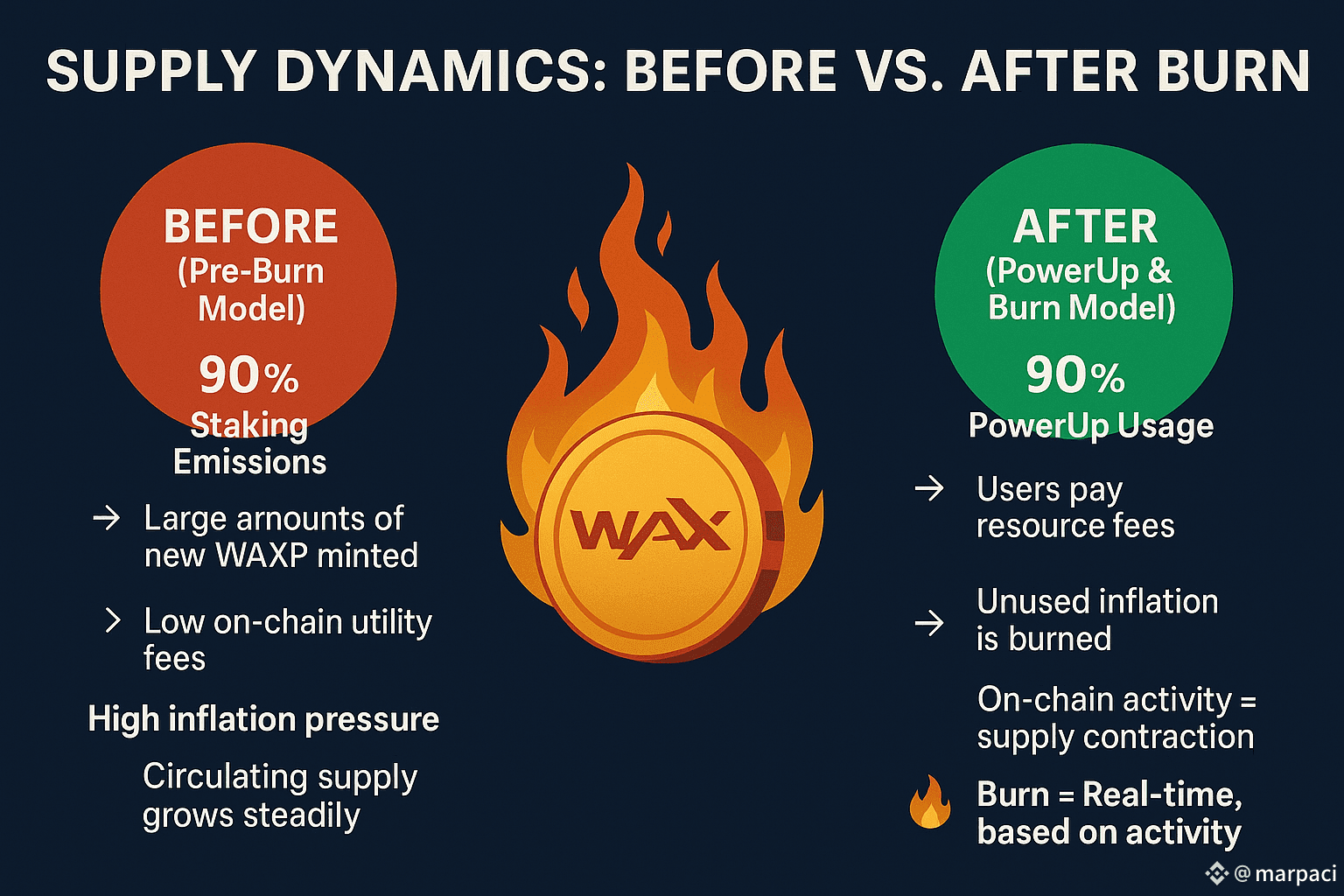
@WAX has started burning the remaining portion of PowerUp fees as “unused inflation” after covering block rewards. In other words, every PowerUp use now directly reduces the circulating supply.
1) Emission reduction & burning
• The previous model was 90% staking / 10% PowerUp, but it’s now flipped to 10% staking / 90% PowerUp
• Any excess PowerUp revenue is automatically burned on-chain
2) Circulating supply & price dynamics
• New token issuance has dropped significantly, which eases sell pressure
• As user engagement increases through #SocialMining and @DAO Labs community activity, more tokens are burned—potentially helping support price levels
3) Strategic timing & expected market reaction
• During a time when NFT and GameFi activity is surging, heavy staking-based inflation was becoming a burden for projects
• This “burn as you use” mechanism arrives just as community participation is gaining momentum through social mining
• With inflation risks decreasing, long-term participants may feel more confident in the system
4) Comparison with ETH, BNB, and Solana
• #Ethereum (EIP‑1559): Burns base fees from transactions but still mints new $ETH through block rewards
• $BNB : Quarterly burns take place regardless of actual network activity
• #solana : Has a planned inflation reduction path, but burning isn’t tightly tied to user activity
• $WAXP : Structures emission and burning entirely around real usage, shaping the token economy in line with on-chain demand dynamics
WAX moving beyond just being a low-fee chain—by reducing supply with every on-chain action, it brings a more sustainable layer to the ecosystem.


